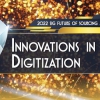In our quest for robotic process automation (RPA) enlightenment, we will come across a lot of speculation and hyperbole on the way. In such a young industry this is perhaps inevitable, but on this journey we will try to separate the wheat from the chaff and pick out real evidence as much as possible. Let’s start as we mean to go on:
Last month I saw the most startling and fundamentally new demonstration I have yet encountered of how RPA is turning the old world of outsourcing upside down. As a sourcing advisor, I get to look at many outsourcing tenders for clients, in particular assessing the pricing and resourcing assumptions projected out over the course of deals. In the world of BPO, in areas such as Finance, HR or industry-specific processing, pricing levels and approaches haven’t changed dramatically over the past decade.
But last month I reviewed pricing submissions for three blue chip service providers to deliver a BPO service. Instead of the usual price per resource with a gradual year-on-year efficiency improvement (‘the glidepath’ of resources being removed from scope as operations become more efficient), we saw pricing in which there were material headcount reductions in each year of the deal. Not just the gradual FTE improvements of a few percent per year, but significant savings each year of 10 or 15% or more per year.
This may sound like a small or technical change. But it represents a revolution. Automation as part of an outsourcing deal is not new, but the speed and scale of automation that outsourcing suppliers are starting to commit to is much more radical than we have seen before. With annual headcount reductions at this rate over the course of a five-year deal, the cumulative efficiencies will be radical with perhaps 50% or less of the staffing required to deliver a service at the end of the deal compared to what was required at the outset.
In other words, it looks like outsourcing deals will be much less static than buyers are used to. Large chunks of the BPO and ITO worlds are very people- or ‘FTE’-intensive – with service delivery centres of several hundred or more people in locations in the UK, Europe, India and beyond. As a result of RPA, it seems that buying outsourcing will be much less about buying ‘people’, and much more about buying technology and automation. Nothing quite like this has happened in the 20-year history of mass outsourcing. It even threatens to overturn old assumptions about globalisation: why send work to cheap offshore locations, or build up large hubs of global resourcing around the world if the cheapest workforce of all is the robotic labour hosted inside your server farm?
These recent bids also show that outsourcers now need robotics to compete. For this client, any bidder providing a bid response without the RPA element would have not got into the final selection. Competing with the old commercial assumptions (i.e. cheaper resourcing, slightly fewer each year) just won’t win tenders where other bidders are able to deploy new automation tools. Admittedly not every process will be amenable to RPA-style improvements, but the list of use cases is growing by the day.
So this one data point, of significantly accelerated supplier efficiencies through RPA, is an illustration of how compelling the commercials of automation are becoming. It seems likely that this is just the opening salvo in a competitive war in which automation will be fundamental to compete. If it has not already happened for your organisation yet, in the next few months I predict the question regarding RPA will quickly turn from ‘why’ to ‘why not’.
This small example is also an illustration of how unpredictable and disruptive RPA change could be. There is no single agreed view of RPA, no standard approach, little in the way of history, but already the leading outsourcing providers are spontaneously building RPA into their offerings and a new competitive standard is emerging. RPA is devouring the old commercial certainties of outsourcing. It will have a similar impact no doubt on shared services and other areas. Hold tight.







